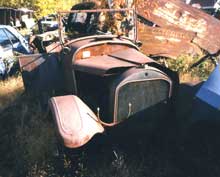Outbid by former boss Billy Durant, Walter Chrysler was disappointed to lose out at the auction for the old Willys plant in Elizabeth, New Jersey. Perhaps more important was the prototype automobile sold with the plant, a six-cylinder car designed by engineers Fred Zeder, Owen Skelton and Carl Breer. Durant, however, was on a roll, forming his third automotive empire (the first two being different eras of General Motors). He wanted an upscale car to compete with GM’s Buick, and the Willys prototype, with some modifications, filled the bill. Thus was born the Flint, which could be called “Billy’s Buick,” built variously on Long Island, at Elizabeth and in Durant’s old home town and the car’s namesake city, Flint, Michigan. It was introduced in New York City in January 1923.
Priced from $1,195 to $2,085, the Flint Model E was indeed in Buick territory, whose prices ranged from $865 to $2,195. Its 120-inch wheelbase was between that of the two larger Buicks, and its 65 hp Continental engine slightly more powerful. For 1925 there were two Flints, a 49-hp, 115-inch H-40, and the E was now called “E-55,” handsome from all angles. Three Flints were offered in 1926, a 40-hp, 115-inch Junior, a Model 60 that was a renamed H-40, and the E-55 had become the Model 80. For 1927 these became the Z-18, B-60 and E-80, respectively, but Flint was more out than in. With just 2,000 built that year, production was halted, though Billy’s third automotive empire would struggle on a for a few more years. An excellent explanation of Flint’s career can be found on line at Durant Cars.
The Flint atop this page was once in Ed Moore’s eclectic yard at Bellingham Auto Sales in Massachusetts. It has now gone to a new owner, carefully loaded with a fork lift, such was its condition.
Walter Chrysler, however, had the last laugh. He set Zeder, Skelton and Breer to work on a new design, which appeared as the Chrysler B-70 in 1924. The Chrysler was an immediate hit, selling nearly 80,000 cars the first year. Buick was flying even higher, with 125,000 sixes going out the door. Flint, meanwhile, managed barely 15,000 in two years.

